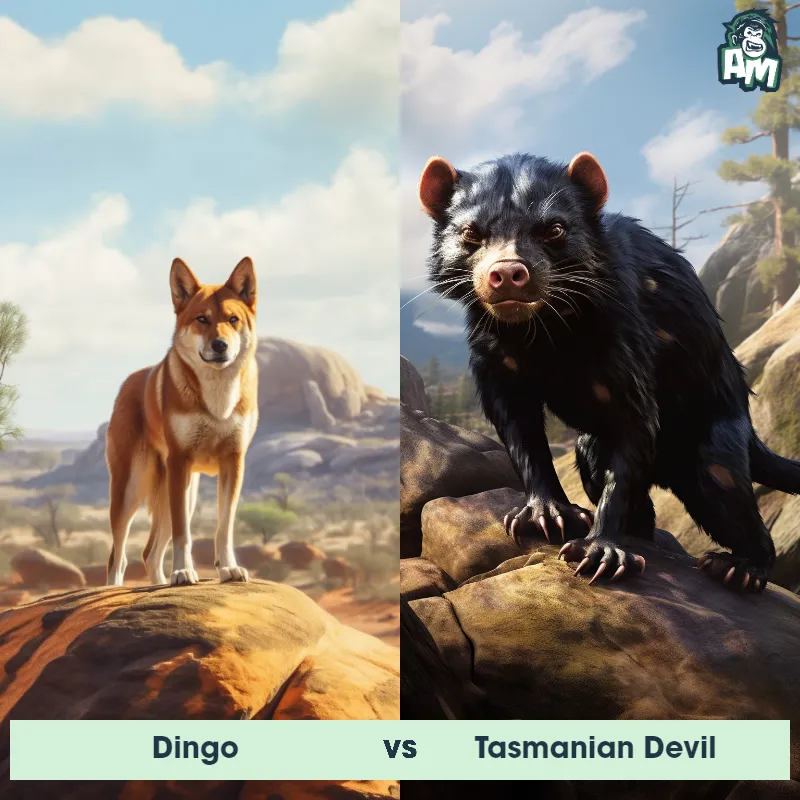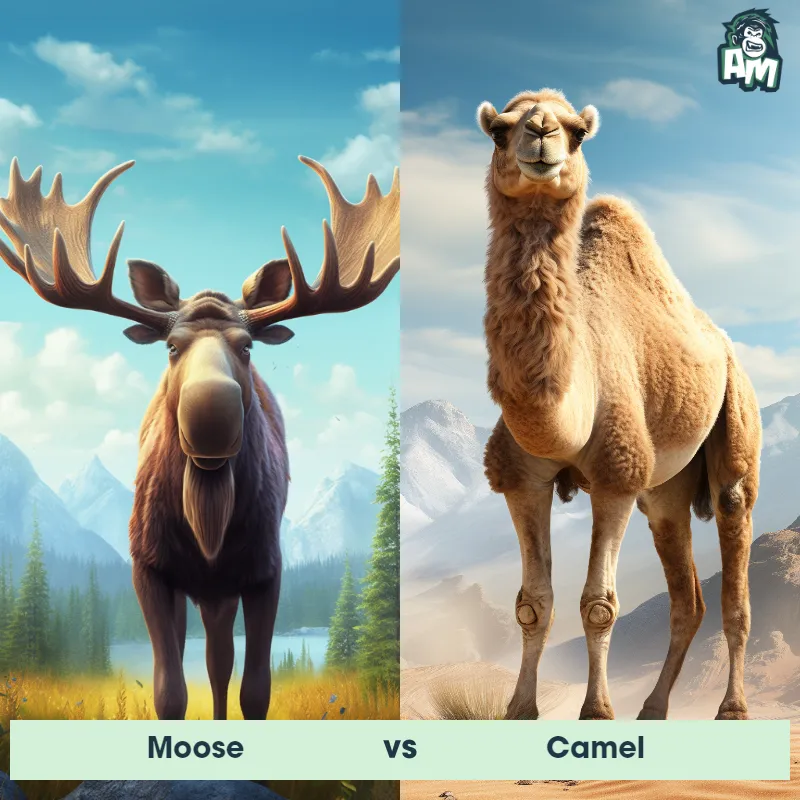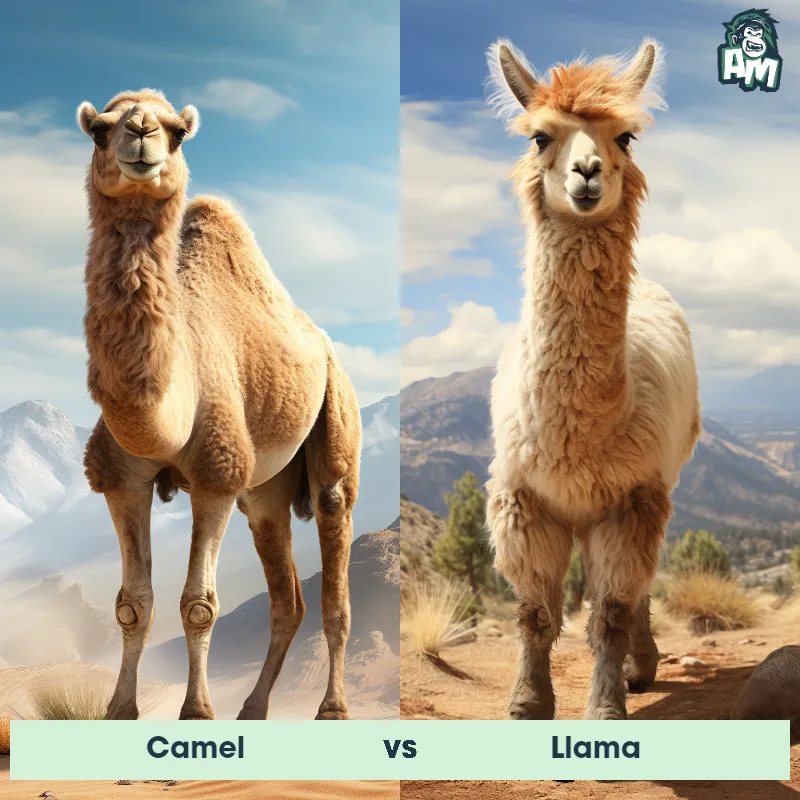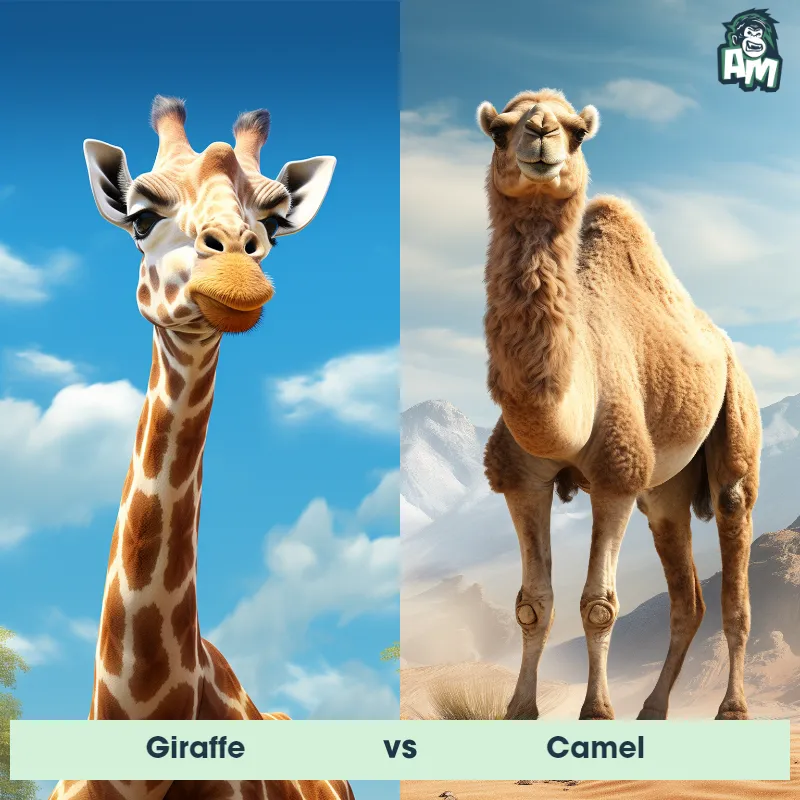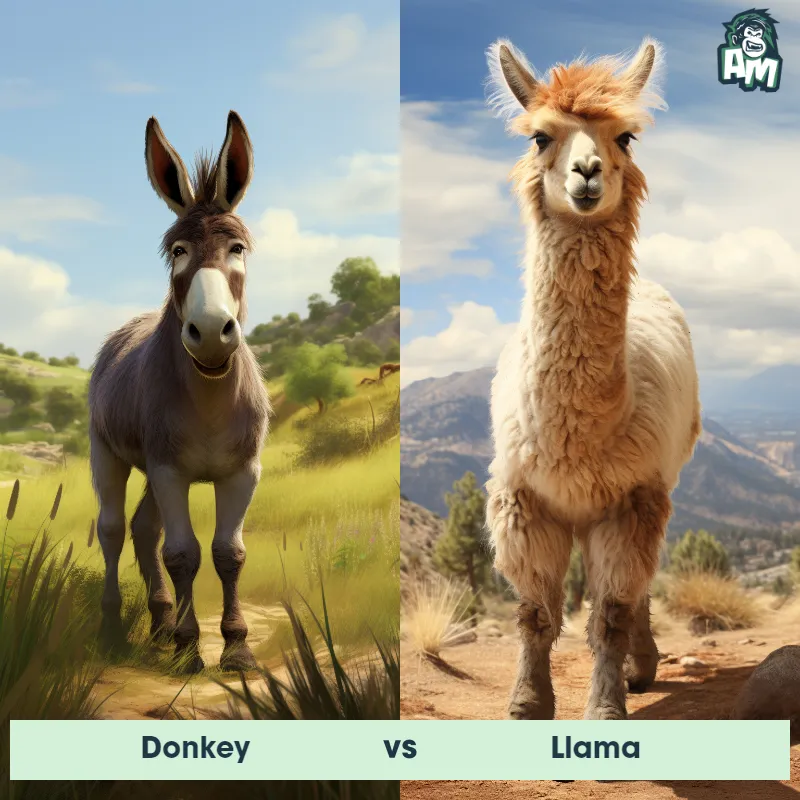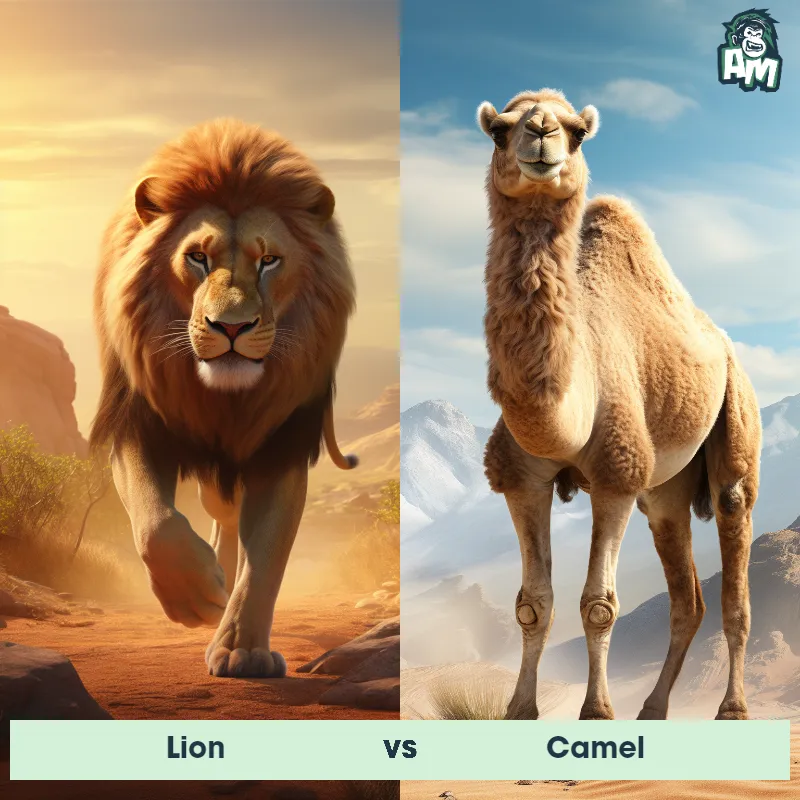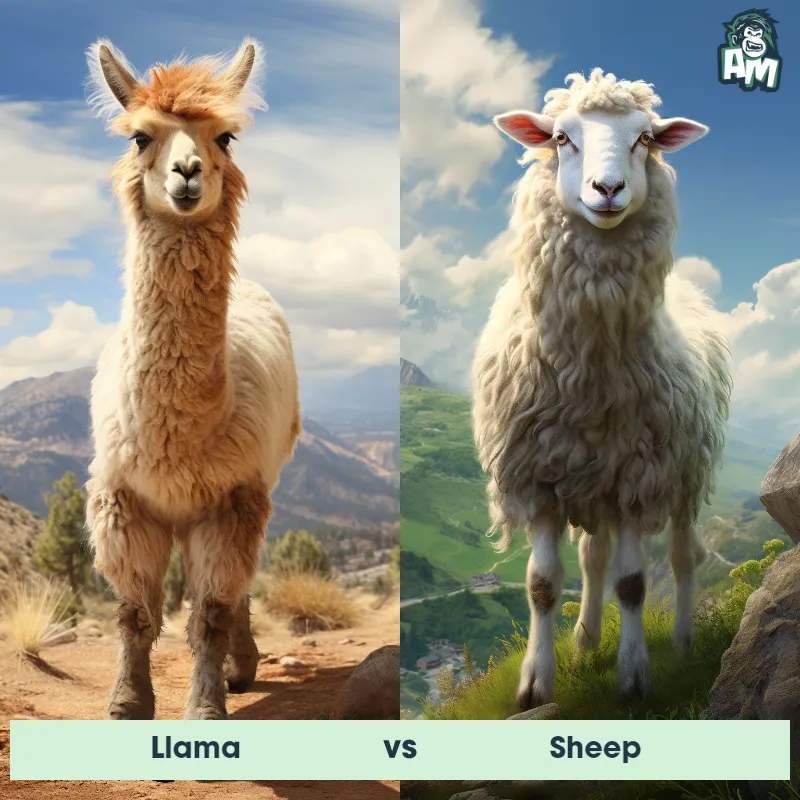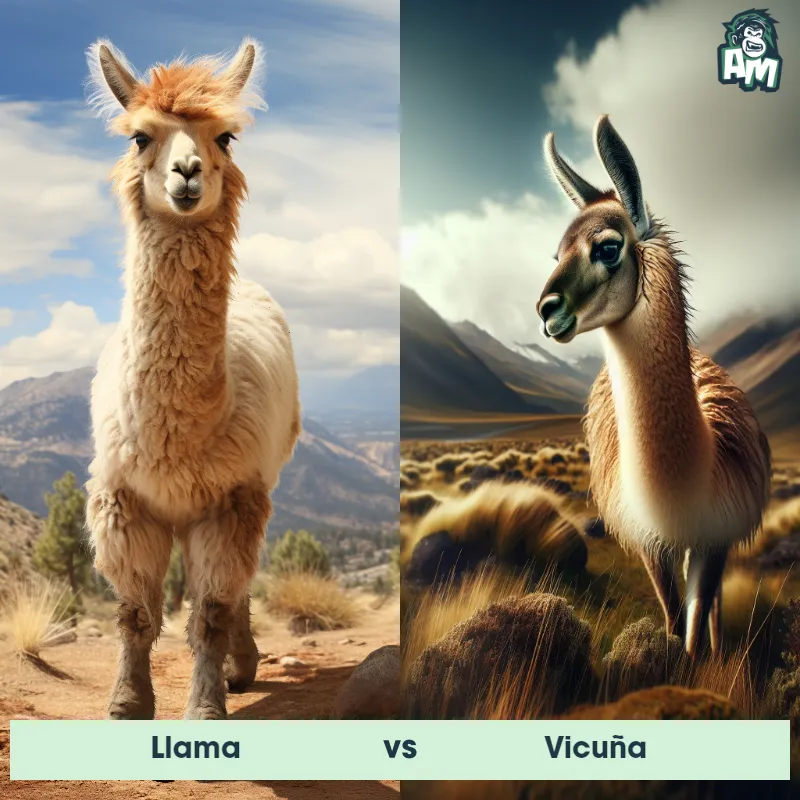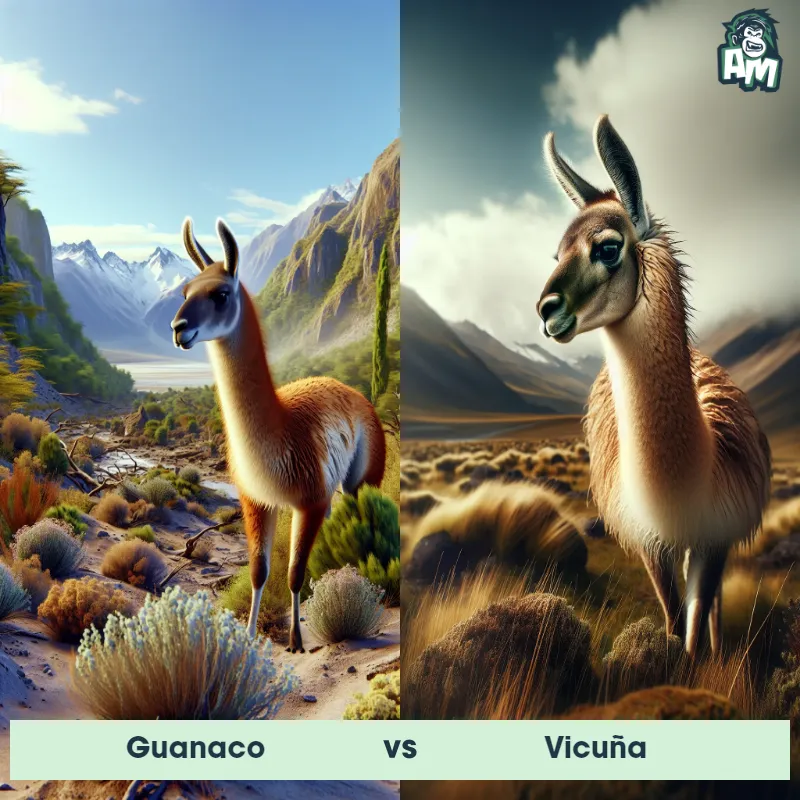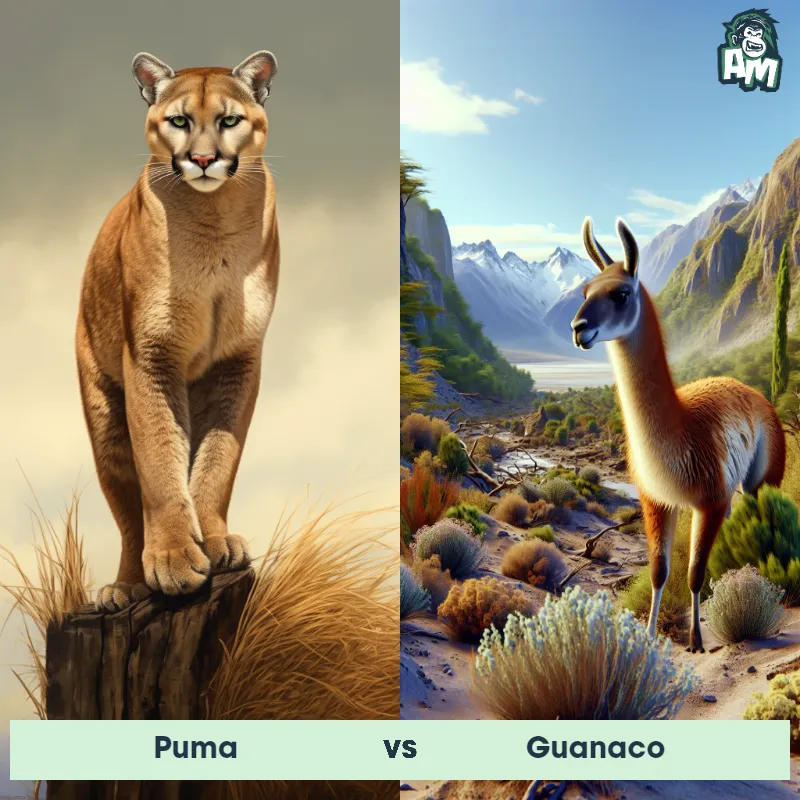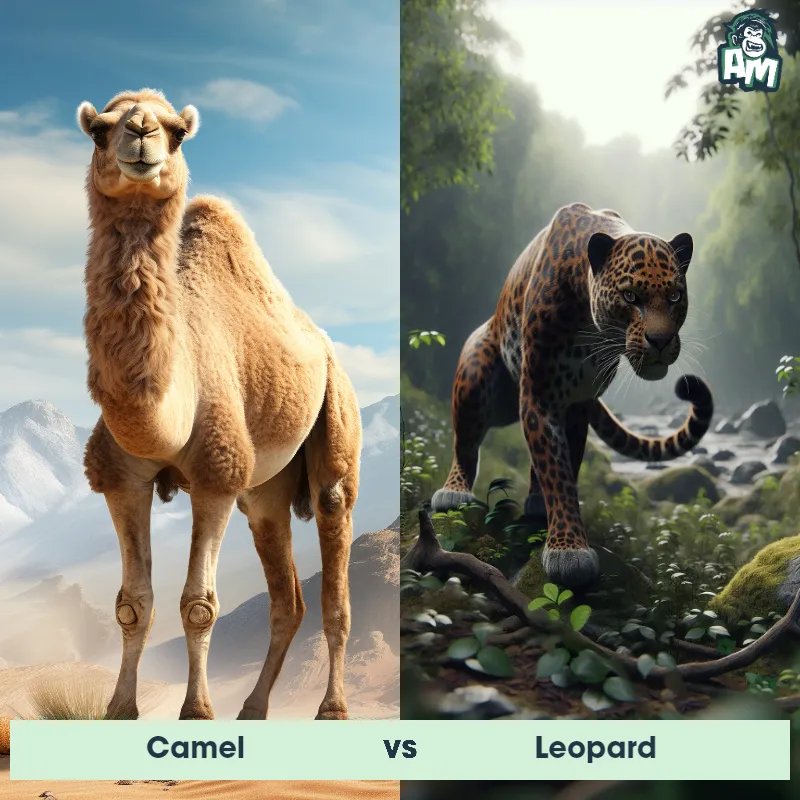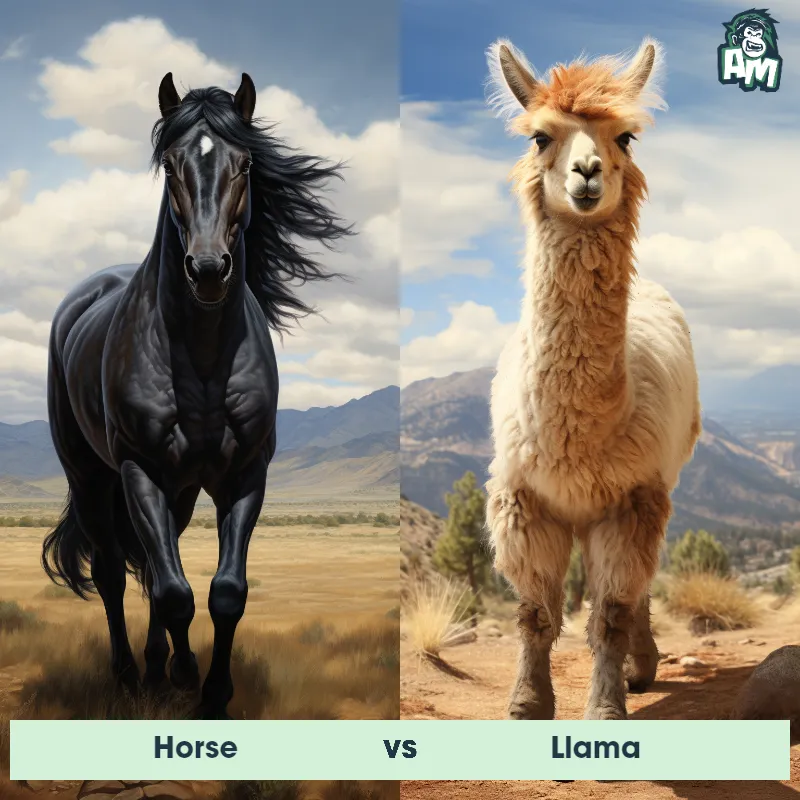llama vs GuanacoSee Who Wins

Ladies and gentlemen, welcome to this exciting matchup between two formidable opponents in the animal kingdom. We have an intriguing battle tonight between a llama and a guanaco. Both known for their agility and strength, these South American species are ready to unleash their skills in a three-round showdown. Let's see who will emerge victorious as the ultimate champion in this thrilling contest!
Contender 1: llama
The Llama is a domesticated South American camelid, widely known for its use as a pack and meat animal by Andean cultures since the Pre-Columbian era. They have a large, elongated body standing on four legs, with a long neck and a small head. Covered in thick wool, llamas can come in a variety of colors, including white, black, brown, and gray. They are social animals, often living in herds, and are uniquely adapted to harsh environments, particularly high altitude regions.
Fun Fact: Llamas have an interesting way of communicating: they express themselves through a series of ear movements, body language, and humming sounds.
Contender 2: Guanaco
The Guanaco is a large terrestrial mammal native to the mountainous regions of South America. It belongs to the camelid family, which also includes llamas, alpacas, and camels. Standing at around 3 to 4 feet tall at the shoulder, the Guanaco has a slender body with a long neck and legs. It is covered in thick, coarse, and woolly fur that ranges in color from light brown to reddish-brown. This adaptable animal has a unique set of physiological adaptations that enable it to withstand harsh weather conditions, including extreme temperatures and high altitudes. It is a social creature, often found in herds of up to 10 individuals, and communicates using a variety of vocalizations, such as grunts, hums, and alarm calls.
Fun Fact: Despite living in arid and harsh landscapes, Guanacos have a remarkable ability to conserve water by extracting moisture from the plants they consume, effectively reducing their reliance on external water sources.
Matchup Stats
| llama | Guanaco | |
|---|---|---|
| Size | 5.6 to 5.9 feet tall at the shoulder (1.7 to 1.8 meters) | 3-4 feet tall at the shoulder (0.9-1.2 meters) |
| Weight | 290 to 440 pounds (130 to 200 kilograms) | 200-300 pounds (90-135 kilograms) |
| Speed | 35mph (56km/h) | 35mph (56km/h) |
| Key Strength | Ability to spit, kick, and charge at opponents | Agility and speed |
| Biggest Weakness | Lack of sharp teeth or claws for defense | Lack of natural defensive weapons |
Current Votes
llama vs Guanaco
See Who Wins
View More Matches
Looking For More?
Similar Matches
Scientific Stats
| llama | Guanaco | |
|---|---|---|
| Scientific Name | Lama glama | Lama guanicoe |
| Family | Camelidae | Camelidae |
| Habitat | Mountainous, high altitude regions | Mountainous regions of South America |
| Geography | Native to South America, specifically the Andean region | Argentina, Bolivia, Chile, Peru |
| Diet | Herbivore, primarily grazing on grasses and other vegetation | Herbivorous, primarily grazing on grasses and other vegetation |
| Lifespan | 15 years - 25 years | 10 years - 15 years |
Key Differences between llama and Guanaco
- Facial features: Llamas typically have a more refined and elegant facial appearance, with a straight or slightly convex nose profile, while Guanacos often have a more rugged-looking face with a more pronounced roman nose shape.
- Tail: One notable difference is the appearance of their tails. Llamas have a tufted tail that hangs down, while Guanacos have a slender, straight tail that extends out horizontally.
- Ears: A prominent distinguishing feature is the shape of their ears. Llamas have longer, curved ears that point slightly outward, while the Guanaco has shorter, straighter ears that stand more erect.
- Body shape: Lastly, the overall body shape differs slightly between the two species. Llamas have a more compact and stocky body with a broader chest, while Guanacos appear slenderer and have a more angular appearance, often displaying a slight hump on their back.
- Coloration: Llamas display a wider range of coat colors, including various shades of brown, black, and white, often with spotted or patched patterns. In contrast, Guanacos generally have a more uniform light brown or reddish-brown coat.
- Size: The Guanaco is slightly larger than the Llama, with adult Guanacos weighing between 250 to 350 pounds, while Llamas typically weigh between 280 to 450 pounds.






